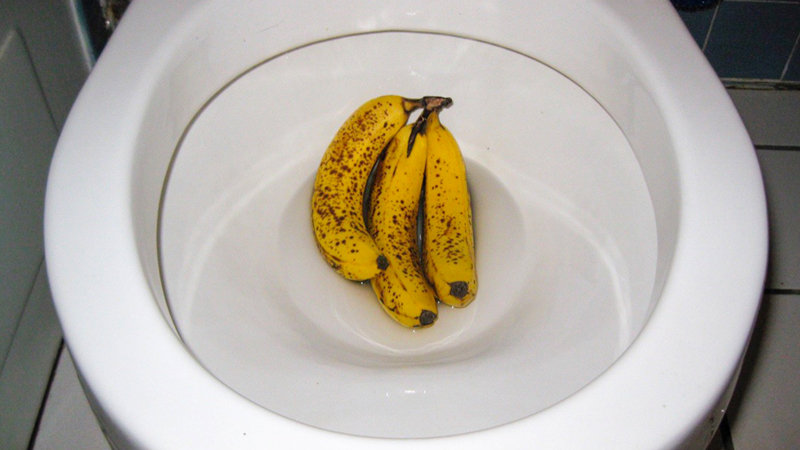Is it Feasible to Flush Food in the Toilet?
Is it Feasible to Flush Food in the Toilet?
Blog Article
What're your insights and beliefs about Flushing Food Down the Toilet??

Intro
Lots of people are typically faced with the predicament of what to do with food waste, specifically when it concerns leftovers or scraps. One common concern that arises is whether it's all right to flush food down the commode. In this write-up, we'll explore the reasons individuals may think about flushing food, the effects of doing so, and different approaches for appropriate disposal.
Reasons why individuals might think about purging food
Lack of understanding
Some individuals may not be aware of the potential damage caused by flushing food down the bathroom. They might mistakenly believe that it's a safe practice.
Benefit
Flushing food down the toilet may look like a fast and simple solution to disposing of unwanted scraps, particularly when there's no nearby trash can offered.
Idleness
Sometimes, individuals may merely choose to flush food out of sheer laziness, without taking into consideration the effects of their activities.
Effects of flushing food down the bathroom
Environmental effect
Food waste that winds up in rivers can contribute to pollution and harm marine ecological communities. Additionally, the water made use of to flush food can strain water sources.
Pipes concerns
Purging food can bring about clogged pipelines and drains, creating expensive pipes repair work and inconveniences.
Kinds of food that must not be flushed
Coarse foods
Foods with fibrous structures such as celery or corn husks can obtain tangled in pipes and create blockages.
Starchy foods
Starchy foods like pasta and rice can take in water and swell, leading to clogs in pipelines.
Oils and fats
Greasy foods like bacon or food preparation oils must never be purged down the commode as they can solidify and trigger obstructions.
Correct disposal techniques for food waste
Utilizing a waste disposal unit
For homes furnished with garbage disposals, food scraps can be ground up and purged through the plumbing system. Nonetheless, not all foods are suitable for disposal in this fashion.
Recycling
Specific food packaging materials can be reused, minimizing waste and minimizing environmental influence.
Composting
Composting is an eco-friendly way to throw away food waste. Organic materials can be composted and utilized to enhance dirt for gardening.
The significance of proper waste management
Reducing ecological harm
Proper waste administration techniques, such as composting and recycling, aid reduce contamination and maintain natural deposits for future generations.
Shielding pipes systems
By staying clear of the method of flushing food down the commode, property owners can stop pricey plumbing fixings and keep the stability of their pipes systems.
Verdict
To conclude, while it might be alluring to flush food down the bathroom for comfort, it is necessary to understand the potential repercussions of this activity. By adopting correct waste administration practices and dealing with food waste responsibly, people can contribute to healthier pipes systems and a cleaner setting for all.
THINK TWICE BEFORE FLUSHING FOOD DOWN YOUR TOILET IN FALLBROOK CA
Let’s be honest, we’re really supposed to be tossing rotten or leftover food in the compost bin or trash can. But many people like to place scraps of food down the drain of, say, their kitchen sink. That’s why the garbage disposal was invented: so we can continue to place certain foods down the drain without clogging our drain in the process. Smart.
But not all of us have the luxury of having a garbage disposal installed. So, you might continue to shove food down your sink drain anyway – or worse: you might flush them down your toilet! If you’re guilty of doing the latter, you’re going to want to stop, and here’s why:
Toilet Drains Aren’t Designed to Handle Food!
There’s your answer: food just doesn’t belong in your toilet. It may seem like your toilet drain is wider than the drains of your sinks, but truth be told, that isn’t actually the case. The narrower pipes of your toilet leave your plumbing at risk for clogging if you do happen to flush your food. In addition, food doesn’t break down as quickly that toilet paper and human waste do. In turn, this leaves your toilet at risk for a nasty clog.
Although a flush of a tiny pinch of food every now and then isn’t going to completely damage your toilet, there are certain foods that should absolutely not be flushed in your toilet at all. These include starchy foods like mashed potatoes, grains, hard pieces of food that are slow to break down, and fats and oils.
The latter categories of food are particularly problematic as they may harden, expand as they absorb water, break down slowly in your system, or generally create the perfect obstruction with their gelatinous composition. These are all things you don’t want in your plumbing system!
Experiencing a Toilet Clog?
Nobody’s perfect, and we all make mistakes. Sometimes one of the mistakes people make is flushing food down their toilet and later realizing that it wasn’t the best thing to do once they see that their toilet is now clogged. Uh-oh!

I stumbled upon that page about Think Twice Before Flushing Food Down Your Toilet when doing a search on the search engines. Be sure to take a moment to share this blog post if you enjoyed reading it. I value reading our article about What Can Happen If You Flush Food Down the Toilet?.
Call Today Report this page